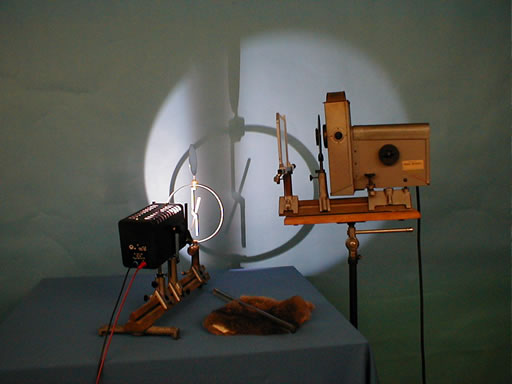Demos: 8A-01 Photoelectric Effect

Directions: Be sure the zinc plate is freshly polished (sanded) for best results. Charge the electroscope negatively by the standard procedures (fur on rubber rod, e.g.). Place the glass plate into the holder and turn on the carbon arc lamp (or a suitable substitute producing an ultraviolet component of the light). Then remove the glass plate and wait for the electroscope to discharge.
Suggestions for Presentation: Point out that glass effectively blocks the shorter wavelength UV light (which is why you don’t get sunburned by the sun’s rays passing through a window pane). Quartz does not, which is the reason for the quartz lens. Then discuss the threshold frequency concept in the photoelectric effect, i.e. photons of a minimum energy (minimum frequency) are required to dislodge the electrons from the metal. Since the glass blocks the higher energy photons, no photoelectrons are produced at the zinc plate.
Applications:
Last Updated: Nov 30, 2023 11:25 AM